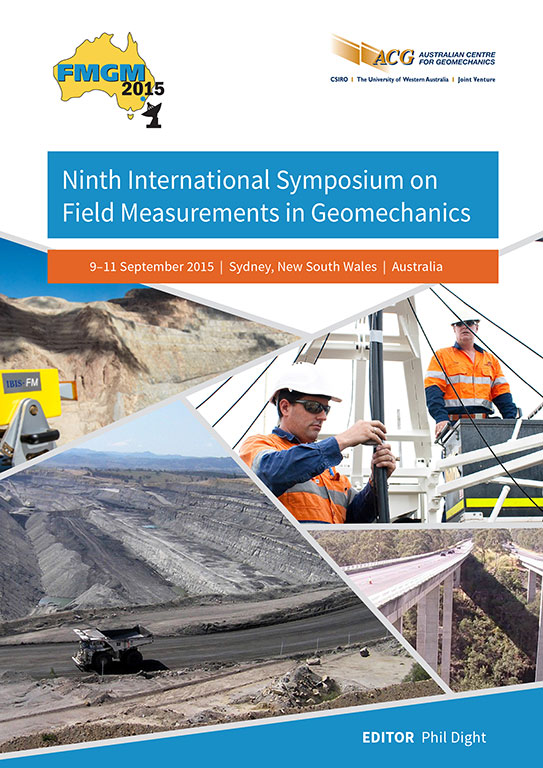Field test of long range terrestrial laser scanner and ground-based synthetic aperture radar for area monitoring in open pit mines

|
Authors: Fowler, A; Geier, A |
DOI https://doi.org/10.36487/ACG_rep/1508_59_Fowler
Cite As:
Fowler, A & Geier, A 2015, 'Field test of long range terrestrial laser scanner and ground-based synthetic aperture radar for area monitoring in open pit mines', in PM Dight (ed.), FMGM 2015: Proceedings of the Ninth Symposium on Field Measurements in Geomechanics, Australian Centre for Geomechanics, Perth, pp. 797-808, https://doi.org/10.36487/ACG_rep/1508_59_Fowler
Abstract:
Slope Stability Monitoring (SSM) has improved dramatically over the past few years with the introduction of total stations, radar and other advanced technologies. This trend is continuing with the use of Terrestrial Laser Scanners (TLS) to enable three-dimensional measurement of slope movements. With useful range of the instruments typically limited by the balance of eye-safety and laser power, the application of TLS systems has been limited to short range scenarios. However, applying infrared wavelengths and novel innovations, these limitations have been surmounted and now monitoring applications beyond 2,000 m are possible at high measurement rates without the safety hazards associated with typical Class 3R long-range laser scanners (LR-TLS). It is now possible to use LR-TLS technology effectively for long range SSM and surface deformation analysis. In a cooperative field test conducted by RIEGL LMS, DMT GmbH & Co. KG, and RWE Power AG, a RIEGL VZ4000 online-waveform processing LR-TLS instrument was deployed in a large opencast coal mine in Germany. LR-TLS data was continuously acquired for a period of 48 hours concurrently with an IDS IBIS-FM long range ground-based Interferometric Synthetic Aperture Radar (GB-InSAR) system and, additionally, a Leica total station monitoring system. Results from this field test demonstrate the potential of this new LRTLS sensor technology and are compared with the results from those achieved via the GB-InSAR, LRTLS and Total Station systems to determine the level of usability in active long-range mining situations.
References:
Atzeni, C, Barla, M, Pieraccini, M & Antolini, F 2015, ‘Early warning monitoring of natural and engineered slopes with ground-based synthetic-aperture radar’, Rock Mechanics and Rock Engineering, vol. 48, no. 1, pp. 235-246.
Gaisecker, T, Pfennigbauer, M, Sevcik, C, Studnicka, N 2012‚ ‘Terrestrischs Laser Scanning in den Alpen mit dem RIEGL VZ-4000 – für Geländeerfassung, Hangrutschungsüberwachung und Gletschermonitoring’, Vermessung & Geoinformation, pp. 45-52.
IDS Ingegneria dei Sistemi S.p.A 2012, IBIS-L Controller Software, IBIS-L Controller ver. 02.02, User Manual , Pisa, Italy.
Meinig, H 2014, ‘Geotechnische Anforderungen für den Aufbau operativer markscheiderischer Überwachungssysteme im Bereich der Tagebaue der VE Mining AG’, Proceedings of Markscheiderisches Kolloquium 2014 Vattenfall Europe Mining AG, Freiberg, Germany.
Reetz, F & Gaisecker, T 2011, ‘Automatisches Deformationsmonitoring an fortschreitenden Tagebauböschungen der Mitteldeutschen Braunkohlen GmbH (MIBRAG) mit RIEGL Laserscan-Technologie’ 12. Geokinematischer Tag, Tagungsband. [en: Automatic Deformation Monitoring of Slopes for Mitteldeutschen Braunkohlen GmbH (MIBRAG) with RIEGL Laser Scanning Technology]
© Copyright 2025, Australian Centre for Geomechanics (ACG), The University of Western Australia. All rights reserved.
View copyright/legal information
Please direct any queries or error reports to repository-acg@uwa.edu.au
View copyright/legal information
Please direct any queries or error reports to repository-acg@uwa.edu.au